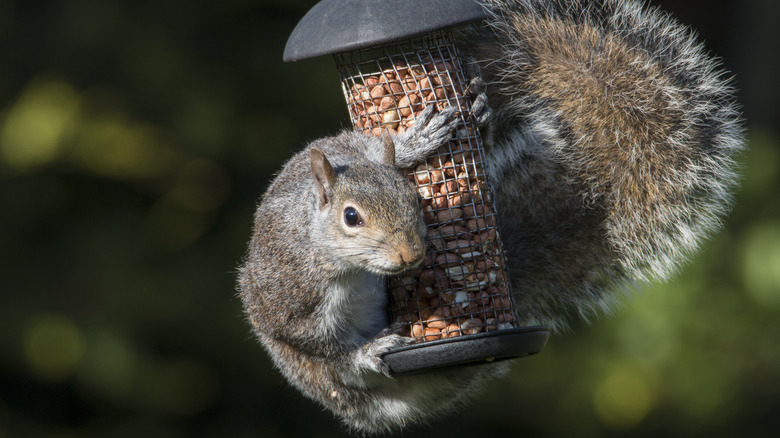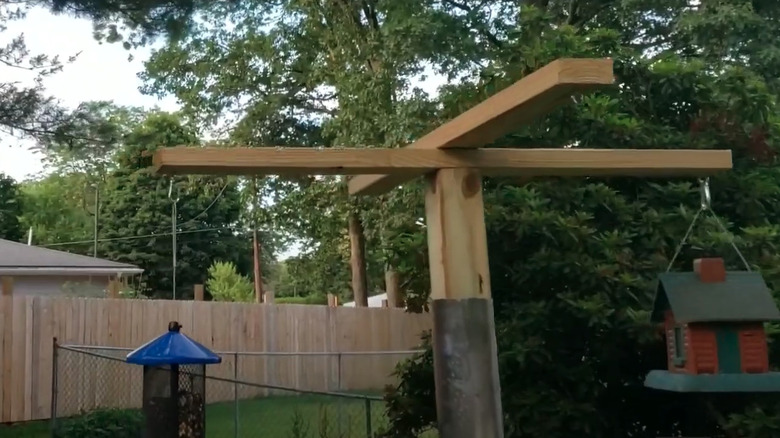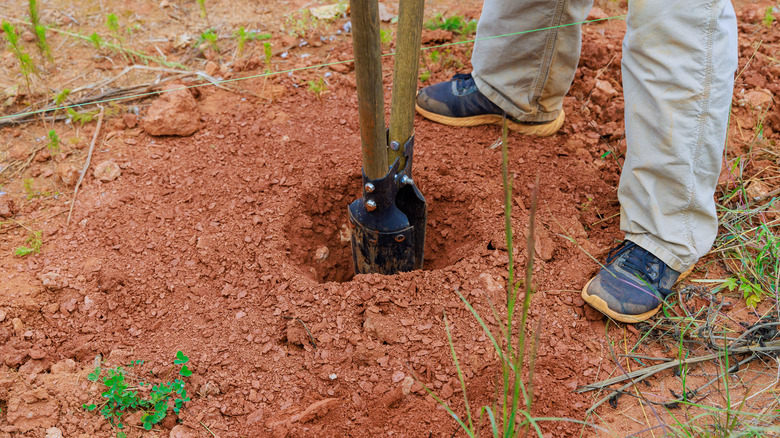The Best Squirrel-Proof Bird Feeder Pole Is One You Can Make Yourself
Are you struggling to keep squirrels out of your bird feeders? Don't blame yourself. The gutsy rodents are excellent climbers and jumpers, for whom most feeder poles pose no serious obstacle in their quest for food. But did you know that with a little ingenuity, a few basic materials, and some grade-school-level math, you can build a squirrel-proof bird feeder pole yourself? That's right, you don't need to waste money buying top-rated squirrel proof feeders. A simple 4-by-4 post, a bit of aluminum flashing, and a suitable anchoring strategy are the only requirements for the best squirrel-resistant feeder pole you can ever ask for.
Squirrels climb trees and wooden bird feeder poles because their claws easily grip these porous surfaces. For this reason, a bird feeder pole that offers zero grip is one of the best ways to keep squirrels out of your bird feeder. That's the function the aluminum flashing serves on the pole. And remember how we mentioned basic math? Well, squirrels don't need to climb to reach desirable objects that are high up — they can jump instead. To deny them this means of ingress into the bird feeder, you'll need to design the post to a specific height. Below, we explain how.
Where to situate the bird feeder pole
Before building the pole, consider how you'll anchor it to the ground. Burying the pole is an excellent choice that eliminates the need for support bases, but for stability, you want at least 30% of the post underground. Since squirrels jump up to 5 feet, a standard-size 4-by-4, 8-foot-long pressure treated post will leave the bird feeders woefully close to the squirrels' reach with this anchoring requirement. Conversely, a 12-foot post would be too long, keeping the bird feeders safely in the air at 9 feet, but leaving you struggling to access the feeders. The best thing to do is to buy a 12-foot post and ask the store staff to cut the length to 9 feet. This affords a comfortable above-ground height of 6.3 feet — tall enough to keep the jumping squirrels at bay, but short enough for you to service without needing a step stool.
Now, here's the deal: Squirrels don't have to make an impossible vertical upward jump to get to the feeder. They can also jump sideways and downwards, and these sideways jumps can span a distance of 10 feet. For this reason, the best place to hang a bird feeder in your yard is at least 10 feet or more from any possible jumping-off points, like trees, light posts, or your home. That's where you should situate the new pole.
How to build, flash, and anchor the bird feeder pole
Once you've got a properly-sized post, screw on the two top planks. Use four screws to secure the planks in place, and choose their length based on the planks' thickness. So, if you're using 2-by-4s, the screws should be long enough to go through 4 inches of the combined plank thickness, then penetrate another inch into the top of the post. Next, wrap the aluminum flashing around the post and fasten it with trim nails like these ones from Lowe's. Finally, screw cup hooks to the undersides of the top cross planks — you'll use these to hang the bird feeders.
You're now ready to install the bird feeder pole. Start by digging a hole at the safe location you've chosen. If the post is 9 feet long, the hole should be about 2.7 feet deep or so. Next, place the post inside and install temporary bracing to hold it in place. Bits of lumber will do the trick — just prop up each of the post's four sides with a plank long enough to span diagonally between the post and the ground. Now, follow the manufacturer's instructions to make the cement mixture. When ready, pour the mix into the hole, and allow it to cure before attaching bird feeders to the pole. If you'd rather conceal the cement with turf, don't fill the hole all the way up; instead, leave about 4 to 5 inches of space between the cement surface and grade and backfill it later.


